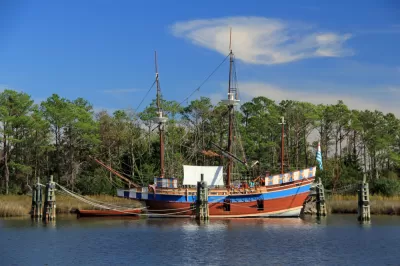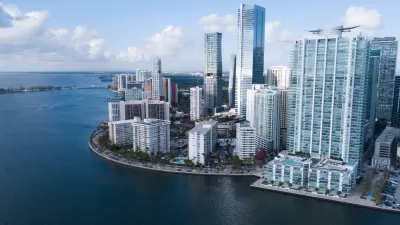A potentially radical point of view that must be considered by planners: moving the field forward will require soul searching that confronts an overcomes the disposition and exploitation that defined the past and continues to influence the future.

Annette Koh provides a treatise on "Decolonial Planning" a project that will require a "radical restructuring of finance, government, and our relationship with for-profit ventures."
Here, Koh connects the historical and the contemporary to describe the characteristics of planning as colonization and its continued influence:
In North America, European ideas about property and land rights allowed for the expulsion of indigenous peoples in the name of progress — with enclosure and privatization going hand in hand with public investment. Founding mythologies such as Thomas Jefferson’s yeoman farmer and the sturdy pioneer turning wilderness into productive farms valorized “improvement” as defined by colonial frameworks of capitalism and justified the displacement of those who had not properly utilized land by these imported standards. Fences and wheat signified “worthy” improvement, while relational knowledge of place, season, and kinship were invisible. Although disavowed today, urban renewal and the wholescale demolition of working class communities of color in the name of progress relied on the same disregard for social value. In present day discussions about the importance of activating “underutilized” public parks, planning yet again fails to see what already exists there in the rush to make spaces attractive to outside interests.
Koh lists some concepts from Hawai'i and New Zealand that could guide a reconstruction of legal and regulatory regimes, and redefine the frequently used term "highest and best use."
In fact, planners are already working on the practical project of decolonizing planning in Hawai'I, according to Koh:
I admit that I am not entirely sure how one goes about decolonizing a county planning department, but the head of Hawai‘i County’s planning department came to our Decolonizing Cities symposium in November 2018 and asked that very question. Planners at the Department of Hawaiian Homelands and in other community organizations are also figuring out how to sustain people’s connection to the ‘aina' by making operating expenses a self-generating fund that reinvests in local needs.
FULL STORY: Decolonial Planning in North America

Alabama: Trump Terminates Settlements for Black Communities Harmed By Raw Sewage
Trump deemed the landmark civil rights agreement “illegal DEI and environmental justice policy.”

Planetizen Federal Action Tracker
A weekly monitor of how Trump’s orders and actions are impacting planners and planning in America.

The 120 Year Old Tiny Home Villages That Sheltered San Francisco’s Earthquake Refugees
More than a century ago, San Francisco mobilized to house thousands of residents displaced by the 1906 earthquake. Could their strategy offer a model for the present?

In Both Crashes and Crime, Public Transportation is Far Safer than Driving
Contrary to popular assumptions, public transportation has far lower crash and crime rates than automobile travel. For safer communities, improve and encourage transit travel.

Report: Zoning Reforms Should Complement Nashville’s Ambitious Transit Plan
Without reform, restrictive zoning codes will limit the impact of the city’s planned transit expansion and could exclude some of the residents who depend on transit the most.

Judge Orders Release of Frozen IRA, IIJA Funding
The decision is a victory for environmental groups who charged that freezing funds for critical infrastructure and disaster response programs caused “real and irreparable harm” to communities.
Urban Design for Planners 1: Software Tools
This six-course series explores essential urban design concepts using open source software and equips planners with the tools they need to participate fully in the urban design process.
Planning for Universal Design
Learn the tools for implementing Universal Design in planning regulations.
Clanton & Associates, Inc.
Jessamine County Fiscal Court
Institute for Housing and Urban Development Studies (IHS)
City of Grandview
Harvard GSD Executive Education
Toledo-Lucas County Plan Commissions
Salt Lake City
NYU Wagner Graduate School of Public Service





























